Top Ten Places Where Life Shouldn’t Exist… But Does
Smithsonian lists the most improbable, inhospitable and absurd habitats on Earth
/https://tf-cmsv2-smithsonianmag-media.s3.amazonaws.com/filer/lava-Galapagos-Islands-631.jpg)
10. Yellowstone's Hot Springs
If you wanted to kill something, or maybe just dispose of a body, you couldn’t do much better than the conditions in Yellowstone’s hot springs. The springs are near the boiling point of water and acidic enough to dissolve nails. But some microbes thrive there, and the pigments they produce give the springs vivid, otherworldly colors.
The heat-loving bacteria Thermus aquaticus is the most famous Yellowstone microbe; it makes an enzyme that researchers use in genetics labs to make copies of DNA. Other Yellowstone microbes eat hydrogen, and a few years ago scientists there discovered an entirely new phylum of photosynthesizing bacteria.
Because there are so many hot springs and mud pots and geysers in Yellowstone, with a variety of temperatures and chemical compositions, the park hosts the greatest known diversity of archaea. Simple, single-celled organisms without nuclei, archaea are a branch of life that has been known only since the 1970s.
Many archaea thrive at hot temperatures (they are also found in volcanoes). And inside some Yellowstone archaea—just to complete the microbial ecosystem—are heat-loving viruses.
9. In Bodies Below the Freezing Point of Water
Some animals survive not only in environments below freezing, but in bodies below freezing. Spiders and insects produce antifreeze that prevent them from freezing solid. The larvae of certain Arctic flies can survive being chilled to about -76 Fahrenheit.
Many species of frogs, newts and turtles do freeze—more than 50 percent of the water in their bodies may be ice. The trick is that they carefully control where the ice forms. As the animal cools, its cells and organs squeeze out water and shrink. Only water outside of the animal’s cells freezes; the crystals may grow in between muscle fibers or around organs.
The coldest sustained body temperature in a mammal is about 27 degrees Fahrenheit, measured in Arctic ground squirrels. Their strategy is called “supercooling”—even though the fluid in their bodies is below the freezing point, the animals eliminate any material on which ice crystals could form.
8. Entirely Alone
Most ecosystems are complicated. A member of any given species has to find other species to eat and avoid those species that want to eat it. If it’s a parasite, it needs a host; if it’s a plant, it may need bacteria to help it process nitrogen or bees to pollinate its flowers.
Not so at the bottom of an almost two-mile-deep South African gold mine. There, Candidatus Desulforudis audaxviator is all there is. This species of bacteria, one of the deepest ever found, lives at about 140 degrees Fahrenheit, fixes its own nitrogen, and eats sulfate—all in complete isolation.
7. The Galapagos Islands
Sure, they’re famous for inspiring Darwin’s theory of evolution by natural selection. But the reason it’s easy (well, in retrospect) to observe evolution on these islands is that they’re almost entirely inhospitable to life. They emerged in the middle of the Pacific Ocean as the tops of still-active volcanoes. They were heat-sterilized and 600 miles from land.
Everything that lives there now flew in on the wind (most plants there have airborne seeds), rode a freak current (including Galapagos penguins, the only species of its kind to live at the equator), or floated on a raft of vegetation (like the giant tortoises). (That is, aside from the species humans have introduced more recently.) Colonization happened rarely and most species stayed where they landed, so relatively simple ecosystems grew up, with enough differences among islands to make them a showcase of evolutionary principles.
6. Acidic Mine Drainage (and Runners-Up)
California’s Iron Mountain was mined starting in the 1800s for gold, silver, copper and other minerals. The minerals originated in the roots of a volcano and were deposited with a lot of sulfide—a compound that turns to sulfuric acid in the presence of water. Mining exposed the sulfides and eventually made the tailings as acidic as battery acid and full of heavy metals such as arsenic.
But plenty of microbes live in the mine. They float on a lake of acid in a pink slick called a biofilm that is made by certain bacteria in the microbial community. Some of the archaea in the mine eat iron and make the already acidic conditions even more acidic by actively converting sulfide into sulfuric acid. The acid eats away pyrite (fool’s gold) and other minerals in the cave, adding more metals into the toxic soup.
This habitat barely edged out other harsh conditions for microbes: extreme heat or cold, intense pressure, and even radiation from a nuclear reactor. Three Mile Island was no Chernobyl, but a 1979 accident there caused the partial meltdown of a reactor and released radioactive gas into the atmosphere. It took many years to clean up the mess, mostly with robots and remotely operated cranes overseen through video cameras. Much to the clean-up crew’s surprise, the coolant water near the core was cloudy: microorganisms were thriving in it despite high levels of radioactivity.
As for pressure, the greatest that any bacteria have ever withstood is 16,000 times greater than the atmospheric pressure we experience at sea level. In experiments at the Carnegie Institution in Washington, D.C., Robert Hazen and his colleagues “subjected a strain of the familiar intestinal bacterium Escherichia coli to the ridiculous pressure of 16,000 atmospheres — a value obtained accidentally by overzealous tightening of a diamond anvil pressure cell.” Oops! But when they examined the bacteria later, a few had survived this pressure—which is greater than any pressure at any potentially life-sustaining depth (that is, any depth that is not hotter than the theoretical heat limit for life of 302 degrees Fahrenheit) on the planet.
5. Beneath a Crack in Death Valley National Park
Death Valley is the lowest, hottest and driest place in the United States—not a great place to be a fish. But seven species of pupfish are hanging on, the last survivors of lakes that dried up 10,000 years ago. Now the fish are stuck in springs, salty marshes and in Devil’s Hole, an underground aquifer reachable only by a narrow fissure in the rock.
The Devil’s Hole pupfish, one of the first species protected under the Endangered Species Act, is one of the rarest animals in the world. Fewer than a hundred were counted this year, and in 2006 its population was 38.
4. Deep Sea Vents
Deep sea vents are the prototypical strange place for life. Complex ecosystems, first discovered in 1977, are thriving in utter darkness, under intense pressure, fueled by sulfur. The vents are found at the intersections of two oceanic plates. Unlike most earthquake and volcano zones, where two plates are coming together, vents are places where two plates are spreading apart. Water seeps into the cracked crust, picks up minerals and heat, and spews out of the vents.
At the bottom of the food chain are microbes that get their energy from chemicals in the vents, usually hydrogen sulfide. Hundreds of other species have been discovered that live only in these vents, including various tube worms, barnacles, mussels and shrimp.
3. At Very, Very Old Ages
Bacteria under stress often form spores, little shelled nuggets that contain the bacterial DNA and some cellular machinery but are dormant. The spores can survive all kinds of trauma—heat, cold, gamma radiation, ultraviolet radiation, high pressure, low pressure—for a very long time. How long? Well, there have been some spectacular claims, some of which scientists are still debating.
In 1995, scientists reported that they had isolated spores from the gut of a bee in 25-million to 40-million-year-old amber. They said they had revived the spores and grown bacteria from them.
A few years later, another team reported reviving much older spores—250 million years old—from salt crystals.
There's been a lot of debate about the claims, especially the latter one, because it's so easy to get bacterial contamination even deep in the ground.
More recently, scientists have resuscitated bacteria that have been on ice for millions of years. The bacteria were in suspended animation in the oldest ice on Earth, in a valley in Antarctica. Those a million or so years old revived relatively easily, and some of the oldest ones, which were covered in ice 8 million years ago, also showed signs of life.
2. The Coldest Places on Earth
Technically there are colder places on Earth than the Arctic and Antarctic, but you'd have to go to a physics lab to find them.
Outside of the lab, nothing is quite so miserable for a warm-blooded creature as a polar winter. In the Antarctic, emperor penguins spend months at temperatures as cold as -40 Fahrenheit, in the dark, without eating, while incubating eggs. How do they manage? They are the definition of misery loving company: they huddle together, sharing warmth and minimizing the surface area of their bodies that is exposed to the cold. They also drop their metabolic rate by about 25 percent and their core temperature by a few degrees.
At the other end of the Earth, a rare duck called a spectacled eider requires open water to feed—which is inconvenient given that most of the Arctic freezes over. Until a few years ago, scientists had no idea where these eiders spent their winters. It turns out they huddle together in cracks between plates of sea ice, diving for clams and sharing their warmth, and possibly churning up their small patch of open water enough to keep it from freezing.
1. In the Stratosphere
Yes, the stratosphere—the layer of Earth's atmosphere that starts at about six miles above the ground. Massive dust storms from the Sahara and other deserts move millions of tons of soil each year, and a shocking number and variety of microbes go along for the ride. Dale Griffin, of the U.S. Geological Survey, has collected microbes in dust at altitudes of up to 60,000 feet (more than 11 miles high).
What's up there? Bacteria, fungi, viruses—hundreds of different kinds. Disturbingly, many of the identified microbes are known human pathogens: Legionella (which causes Legionnaire's disease), Staphylococcus (which causes staph infections), and many microbes that cause lung diseases if (ahem) inhaled.
"I was surprised at the numbers of viable microorganisms that we could find in very small volumes of air when desert dust was present," says Griffin. "If you look, they are there—even in the most extreme environments."
/https://tf-cmsv2-smithsonianmag-media.s3.amazonaws.com/accounts/headshot/laura-helmuth-240.jpg)
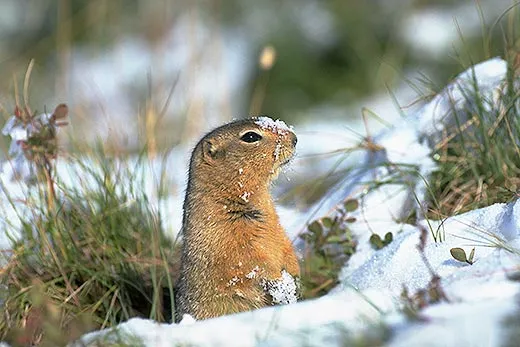
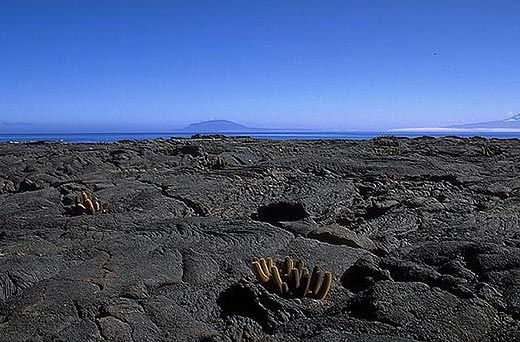
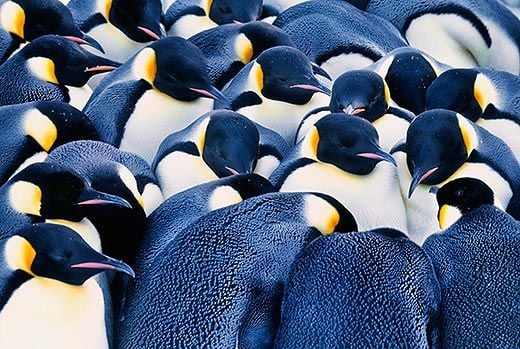
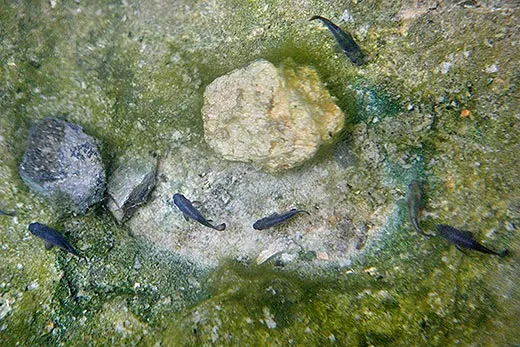
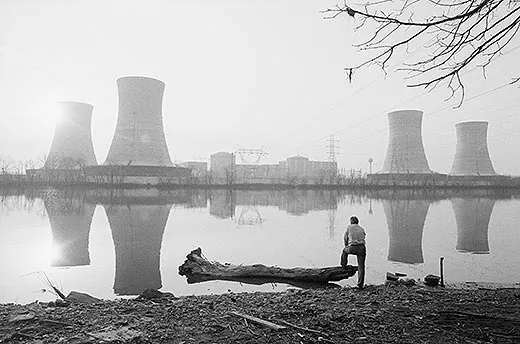
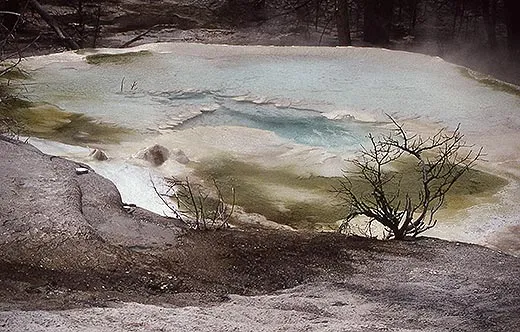
/https://tf-cmsv2-smithsonianmag-media.s3.amazonaws.com/accounts/headshot/laura-helmuth-240.jpg)